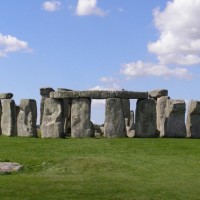Blog
Way to Avalon, a pilgrimage of the past returns to the present
Summer Solstice 2015 has already happened and with it, this week the celebrations will spread across Europe. St John's Day is the name under which the Church adapted the European custom of celebrating the beginning of summer, mystical pagan season for this continent: more light, heat, agricultural work is made... No wonder they took counsel throughout above. Today we can find celebrations recover the holidays in places where tradition and archaeological evidence indicate a sacred character. For several years, the pagan pilgrimage to Glastonbury is booming; It is the way to Avalon, a pilgrimage of the past returns to the present.
Although the goal of this path is somewhat vague, the spirit of fraternity and community nature motivate more and more people, believers in any New Age philosophies or just for merely curiosity, come to this celebration in southern England.
But we split: What is Avalon?
The mythical island of Avalon (meaning island of apples) was a place out of time in which they lived fairies and mythical beings Briton folklore. It became popular when appearing mentioned in the Arthurian cycle. After Arthur Pendragon was about to die at the hand of his bastard nephew-son Mordred in battle, nine fairy queens recovered his body and took him to the mythical island, where he is recovering from his wounds and waiting to return and reclaim his throne.
The Arthurian cycle was probably one of the first widely popular tales in medieval Europe, although sources that originated the myth were never quite expensive. The island of Avalon, for example, was never identified with certainty but from the eleventh century flying hill of Glastonbury, in Somerset, is aimed as the place where this paradise opened halfway between the Celtic tradition and the first assimilation Christian.
What can we expect if pilgrimage to Glastonbury?
One hour from the city of Glastombury find the best known megalithic monument in Europe, Stonehenge. The medieval tradition attributed to wizard Merlin construction although scientific evidence placed the first stone circles in 3100 BC.
A pilgrimage outside any monotheistic consideration. No records exist or hardly any theories on the use that gave this set, so the pilgrimage was completed on Sunday June 22, and begins a four-day festival has more to do with neo-pagan tendencies and with the celebration of summer with memories of a codified tradition. A rehabilitation of a space with values of communion with nature, celebration of celestial mechanics and recovery of the body.

The phenomenon of the pilgrimage, the urge to explore ways to mess with a transcendent meaning and meet there with a community that values and ways of understanding life retains its validity through times shared. From Fairway want to know the reasons for each pilgrim, his thoughts on the challenge of achieving a goal, the joy of finding others or need to be left to one himself.
